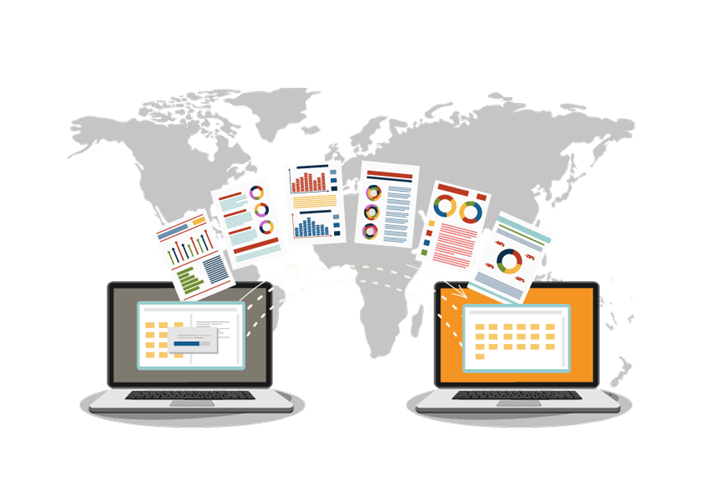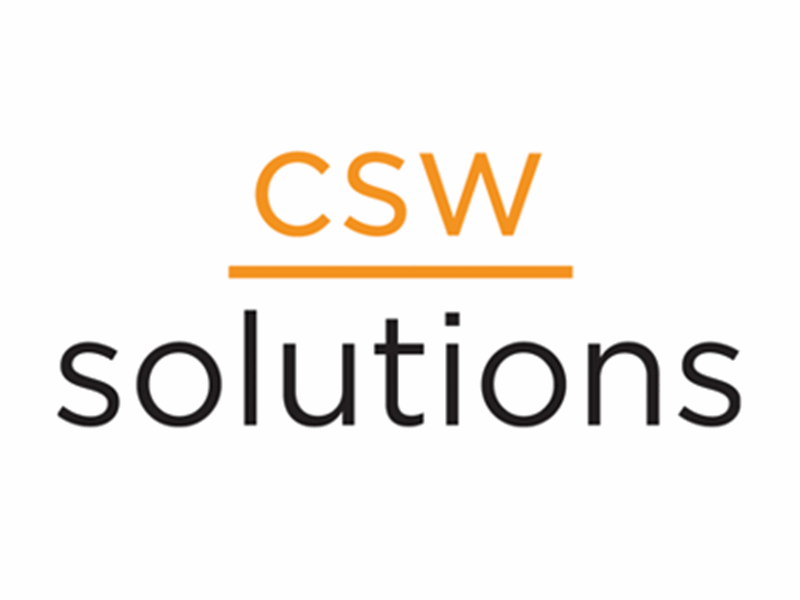For more information on your charming neighborhood CSW Solutions, visit us at our home or subscribe to our newsletter! We also do that social networking thing at: Twitter, Facebook, Linkedin, and Instagram! Check out our #funfactfridays
Enhancing Data Migration in Azure: Top Tools and Strategies
Data migration can be a daunting task for businesses, often involving complex processes and potential data loss. Whether it's customer information, sales data, or financial records, the ability to effectively migrate this data to the cloud is crucial for seamless operations and scalability. However, with the advent of cloud computing platforms like Microsoft Azure, businesses now have access to a range of powerful tools and strategies that can greatly enhance their data migration capabilities.
Azure offers a wide range of tools and services, including efficient data migration capabilities. In this article, we will explore the top tools and strategies available in Azure that can help businesses enhance their data migration process, enabling them to harness the full potential of their data in the cloud. Whether you are considering migrating to Azure or in the process, we will provide valuable insights and best practices to help optimize your data migration journey.
Key Considerations for Azure Data Migration
Migrating data to Azure can offer many benefits, such as increased scalability, flexibility, and cost savings. However, before deciding to migrate, several factors need to be considered.
Volume - First of all, data volume is an important factor to consider. The amount of data that needs to be migrated will impact the time and resources required for the migration process. Large volumes of data may require additional planning and coordination to ensure a smooth transition.
Data Type - The types of data being migrated require different strategies. Different types of data have varying degrees of requirements and considerations. For example, sensitive or confidential data may require additional security measures to protect it during the migration process and while stored in Azure. It is important to assess the sensitivity and classification of the data and ensure that appropriate security measures are in place.
Security - Data security is another critical factor. Azure provides robust security measures, but it is essential to evaluate your organization's specific security requirements and compliance needs. This includes considering encryption, access controls, and data governance policies.
Compatibility - Additionally, it is important to assess the compatibility and integration of your existing systems with Azure. Compatibility issues can arise when migrating data from on-premises systems to the cloud. It is necessary to evaluate the compatibility of your applications, databases, and other systems with Azure to ensure a successful migration.
Cost - Lastly, cost considerations should not be overlooked. While Azure offers cost-saving benefits, it is important to assess the potential costs associated with data migration, storage, and ongoing management in Azure. Understanding the pricing model and estimating the costs beforehand can help avoid surprises and ensure that the migration is financially viable.
Overview of Top Azure Data Migration Tools
Azure offers a range of data migration tools that cater to different use cases and scenarios. These tools are designed to simplify and streamline the process of migrating data to Azure, ensuring a smooth transition and minimal disruption. Here are some of the key Azure data migration tools and their use cases:
- Azure Data Factory: This tool is ideal for complex data integration scenarios where you need to move and transform large volumes of data from on-premises sources or other cloud platforms to Azure. It provides a code-free visual interface for creating data pipelines and orchestrating data movement and transformation activities.
- Azure Database Migration Service: This tool is specifically designed for migrating on-premises databases, such as SQL Server, Oracle, MySQL, and PostgreSQL, to Azure. It supports both online and offline (offline data migration) scenarios, and provides a fully managed experience with minimal downtime.
- Azure Data Migration Assistant: This is a great tool for assessing the compatibility of your databases before migration. It helps you identify any potential issues or incompatibilities that may arise during the migration process, allowing you to address them proactively.
- Azure Data Box: If you have large amounts of data that need to be migrated to Azure but have limited or unreliable network connectivity, Azure Data Box can be a game-changer. It is a physical device that you can order from Azure, which you can load with your data and then ship back to Azure for ingestion.
- Azure Data Share: This tool enables you to securely share data with external parties or across different Azure subscriptions. It simplifies the process of securely sharing data by providing granular control over who has access to the shared data and what they can do with it.
These are just a few examples of the Azure data migration tools available. Each tool is designed to address specific use cases and scenarios, allowing you to choose the one that best fits your needs.
Azure Migrate: A Comprehensive Migration Solution
Azure Migrate is a powerful tool provided by Microsoft that simplifies the process of migrating on-premises infrastructure, applications, and data to the Microsoft Azure cloud platform. It offers a wide range of capabilities that make it easier for organizations to plan, execute, and monitor their migration projects.
One of the key capabilities of Azure Migrate is its assessment feature. This allows organizations to assess their on-premises environment and determine the suitability of migrating to Azure. It provides insights into dependencies, performance, and compatibility issues, enabling organizations to make informed decisions about their migration strategy.
Another important capability of Azure Migrate is its discovery feature. This feature automatically discovers and inventories all the virtual machines, physical servers, and databases in the on-premises environment. It provides detailed information about these resources, including their configurations and dependencies. This information is crucial for planning the migration and ensuring a smooth transition to Azure.
Azure Migrate also offers a variety of migration options. It supports both lift-and-shift migrations, where applications are migrated without any modifications, and rehosting or re-platforming migrations, where applications are optimized for Azure. It provides step-by-step guidance and best practices for each migration option, making it easier for organizations to choose the right approach for their specific needs.
In addition to these capabilities, Azure Migrate also simplifies the migration process through its centralized management portal. This portal provides a single interface for managing all aspects of the migration, including discovery, assessment, and migration itself. It also offers tools for tracking progress, identifying and resolving issues, and optimizing performance.



Azure Data Box: Facilitating Large-Scale Data Transfers
Azure Data Box is a physical device provided by Microsoft that enables the transfer of large volumes of data to Azure. It is designed to overcome the limitations of traditional data transfer methods, such as network bandwidth constraints and slow upload speeds. The Data Box can be used for both importing data into Azure and exporting data from Azure.
The Data Box comes in two variations: Azure Data Box and Azure Data Box Disk. The Azure Data Box is a ruggedized, tamper-resistant storage device with a capacity of up to 80 terabytes (TB). It is ideal for transferring large amounts of data where physical shipment is more practical than online transfer. The Data Box Disk, on the other hand, is a smaller, portable SSD storage device that can hold up to 40 TB of data. It is suitable for smaller-scale data transfers or situations where frequent shipments are required.
To use Azure Data Box, users first need to order a Data Box from the Azure portal and specify the desired configuration. Once the Data Box arrives, the data can be securely transferred to the device using standard file transfer protocols or tools like AzCopy or PowerShell. The device is then shipped back to Microsoft, where the data is uploaded to Azure. Users can track the status of their data transfer through the Azure portal.
Azure Data Box offers several advantages over traditional data transfer methods. It eliminates the need to rely on limited network bandwidth, allowing for faster and more efficient data transfers. It also provides a secure and reliable way to transport large volumes of data while ensuring data integrity and confidentiality. Additionally, Azure Data Box simplifies the process of transferring data by automating many of the manual tasks involved in the traditional data transfer process.
SQL Server Migration Assistant (SSMA): Streamlining Database Migration
SSMA, or SQL Server Migration Assistant, is a tool developed by Microsoft to assist in migrating various database platforms to Azure. The tool supports migration from popular database platforms such as Oracle, MySQL, Sybase ASE, IBM DB2, and even Microsoft Access, along with access to Azure SQL Database or Azure SQL Managed Instance. It provides a comprehensive and automated solution for transferring schemas, data, and code from different database systems to Azure SQL Database or SQL Server.
SSMA offers a range of features and functionalities that make the migration process relatively straightforward and efficient. It provides an intuitive user interface with step-by-step guidance, allowing users to easily configure and customize the migration settings according to their specific requirements. The tool also includes an all-inclusive assessment feature that analyzes the source database, identifies any potential issues or compatibility issues that may arise during migration, and generates a detailed assessment report. This report provides insights into the compatibility issues, potential migration challenges, and recommendations for resolving them. It helps in identifying any data type mismatches, unsupported features, or syntax differences between the source database and Azure SQL Database.
One of the key benefits of using SSMA is its ability to automate many of the manual tasks involved in the migration process. It can automatically convert database schema, data types, and functions to ensure compatibility with Azure SQL Database. It also provides options for handling data migration, allowing users to choose between bulk insert, row-level insert, or a combination of both. The tool also provides options for migrating stored procedures, views, and triggers, ensuring a thorough migration of the entire database.
SSMA offers a variety of data migration methods, including direct connection, file transfer, and BCP (bulk copy program), giving users flexibility in choosing the most appropriate method for their specific scenario.SSMA also provides a schema and data migration wizard that allows users to define the migration settings and customize the migration process according to their specific requirements. It offers options for selecting the objects to be migrated, mapping data types, handling stored procedures and triggers, and more.
Lastly, the effectiveness of SSMA also relies on the expertise and experience of the users. While the tool provides a user-friendly interface and automated features, understanding the migration process, database structures, and specific requirements of the source database is crucial for successful migration. SSMA is designed to handle small to medium-sized databases efficiently. However, for large and complex databases, additional planning, optimization, and manual intervention may be required.
Azure Database Migration Service: Simplifying Database Transfers
Azure Database Migration Service is a tool provided by Microsoft Azure that simplifies the process of migrating databases to Azure. It offers a seamless and efficient way to migrate on-premises databases to Azure, as well as between different Azure database platforms. It supports migration from various database sources, including SQL Server, Oracle, MySQL, and PostgreSQL, to Azure SQL Database or Azure Database for MySQL/PostgreSQL.
One of the main advantages of Azure Database Migration Service is its simplicity and ease of use. It provides a user-friendly interface that guides users through the migration process, making it accessible even for those who may not have extensive experience with database management. The tool automates many of the migration tasks, such as schema conversion and data transfer, reducing the manual effort required.
Azure Database Migration Service also offers flexibility in terms of migration scenarios. It supports both online and offline migrations, allowing users to choose the approach that best suits their needs. Online migrations minimize downtime by keeping the source database accessible during the migration process, while offline migrations provide a more controlled environment for complex migrations.
Another advantage is its ability to handle large-scale database migrations. Azure Database Migration Service is designed to handle migrations of any size, from small databases to those with terabytes of data. It utilizes parallel data transfer and compression techniques to optimize the migration process and minimize the impact on performance.
Furthermore, Azure Database Migration Service offers built-in monitoring and troubleshooting capabilities. It provides real-time progress tracking, allowing users to monitor the status of their migrations and identify any issues that may arise. The tool also generates comprehensive reports that summarize the migration process, making it easier to review and analyze the results.

Leveraging Azure Storage Migration Service for Seamless Transitions
Azure Storage Migration Service enables the migration of storage accounts and data from on-premises or other cloud providers to Azure storage. It simplifies the migration process by automating many of the tasks involved and providing a seamless experience for users. The primary role of Azure Storage Migration Service is to facilitate the migration of data from various sources to Azure storage accounts.
Another important aspect of Azure Storage Migration Service is its support for heterogeneous storage environments. Organizations often have a mix of storage solutions, such as file shares, block blobs, or even legacy storage systems. This service provides a unified migration experience, allowing organizations to migrate all types of data seamlessly. It also supports various source platforms, including Windows Server, Network File System (NFS), and Amazon S3. It supports migration from different storage systems, such as file servers, NAS devices, and other cloud storage providers. This flexibility allows organizations to easily move their data to Azure without significant disruptions to their existing infrastructure.
One of the many benefits of Azure Storage Migration Service is its ability to handle large-scale migrations with ease. It supports the migration of multiple storage accounts simultaneously, allowing organizations to migrate their data quickly and efficiently. The service also provides a seamless experience by automatically handling tasks such as data transfer, error handling, and tracking progress. For example, it supports migration in waves, allowing organizations to migrate data in batches to minimize disruptions. It also provides bandwidth throttling and data validation capabilities to ensure that the migration process is efficient and accurate.
Azure Storage Migration Service also offers features that ensure data integrity and security during the migration process. It provides end-to-end encryption for data in transit and at rest, ensuring that sensitive information is protected. Additionally, it performs integrity checks and validates the transferred data, minimizing the risk of data corruption or loss.
On a final note, Azure Storage Migration Service offers a straightforward and intuitive user interface that simplifies the migration process. It provides step-by-step guidance for setting up the migration project, configuring the source and destination storage accounts, and monitoring the progress of the migration. This user-friendly interface makes it accessible to both technical and non-technical users.
Best Practices for Successful Azure Data Migration
When it comes to migrating to a new system or platform, these best practices and strategies can help ensure a smooth and efficient process. While we've covered this in many posts before, one can never be too sure when it comes to best practices for a successful Azure data migration.
- First, it is important to thoroughly plan and prepare for the migration. This includes understanding the scope of the migration, setting clear objectives and goals, and identifying any potential risks or challenges. It is also important to create a detailed migration plan that outlines the necessary steps, timelines, and responsibilities.
- Next, it is crucial to test and validate the migration process before fully implementing it. This can involve running pilot migrations, conducting system tests, and checking for any potential issues or conflicts. By thoroughly testing the migration process, any potential problems can be identified and resolved before they impact the live environment.
- Communication is key during the migration process. It is important to keep all stakeholders informed and involved throughout the process. This includes notifying users of any downtime or disruptions, providing regular updates on the progress of the migration, and addressing any concerns or questions that may arise. Open and transparent communication helps to manage expectations and ensure that everyone is on the same page.
- Another best practice is to prioritize data integrity and security during the migration process. This involves ensuring that all data is properly backed up before the migration, using secure methods to transfer data, and conducting thorough data validation and verification after the migration. By prioritizing data integrity and security, you can minimize the risk of data loss or corruption during the migration.
- Finally, it is important to have a contingency plan in place. Despite careful planning and preparation, unexpected issues or challenges may arise during the migration process. Having a contingency plan allows you to quickly address and resolve any issues, minimizing downtime and disruptions.
By following these best practices and strategies, you can ensure a smooth and efficient migration process, minimizing risks and maximizing success.
Summary
Azure offers robust data migration tools that are designed to help businesses seamlessly transfer their data to the cloud. These tools provide a wide range of features and capabilities to ensure a smooth and efficient migration process. There are many points to consider that we have covered in this post, those include the ability to migrate data from various sources, such as on-premises or other cloud platforms, and the ability to handle large volumes of data. Azure also offers built-in security measures to protect sensitive data during the migration process. Additionally, Azure provides tools for data validation and testing to ensure the accuracy and integrity of the migrated data. Overall, utilizing Azure's data migration tools can greatly simplify the process while maintaining data integrity, and result in optimal results for businesses. It is ideal for enhancing your migration strategy and streamlining data migration processes to maximize the benefits of cloud computing. If you are looking for more Azure expertise, feel free to reach out to us at CSW Solutions!
Cloud migration and managed services are the best way to improve your business and operations. Read on to learn more about what CSW Solutions can do for you as your Gold-certified cloud solutions partner.
